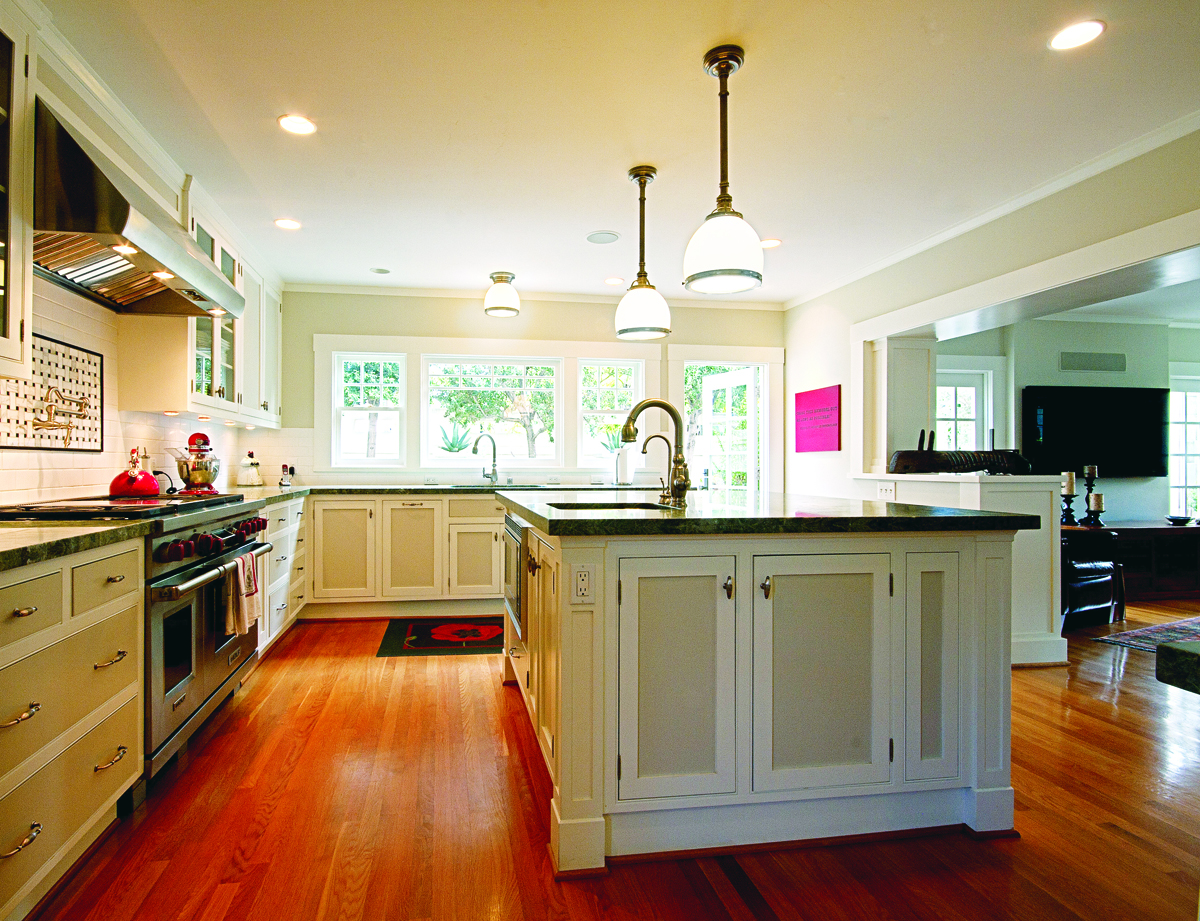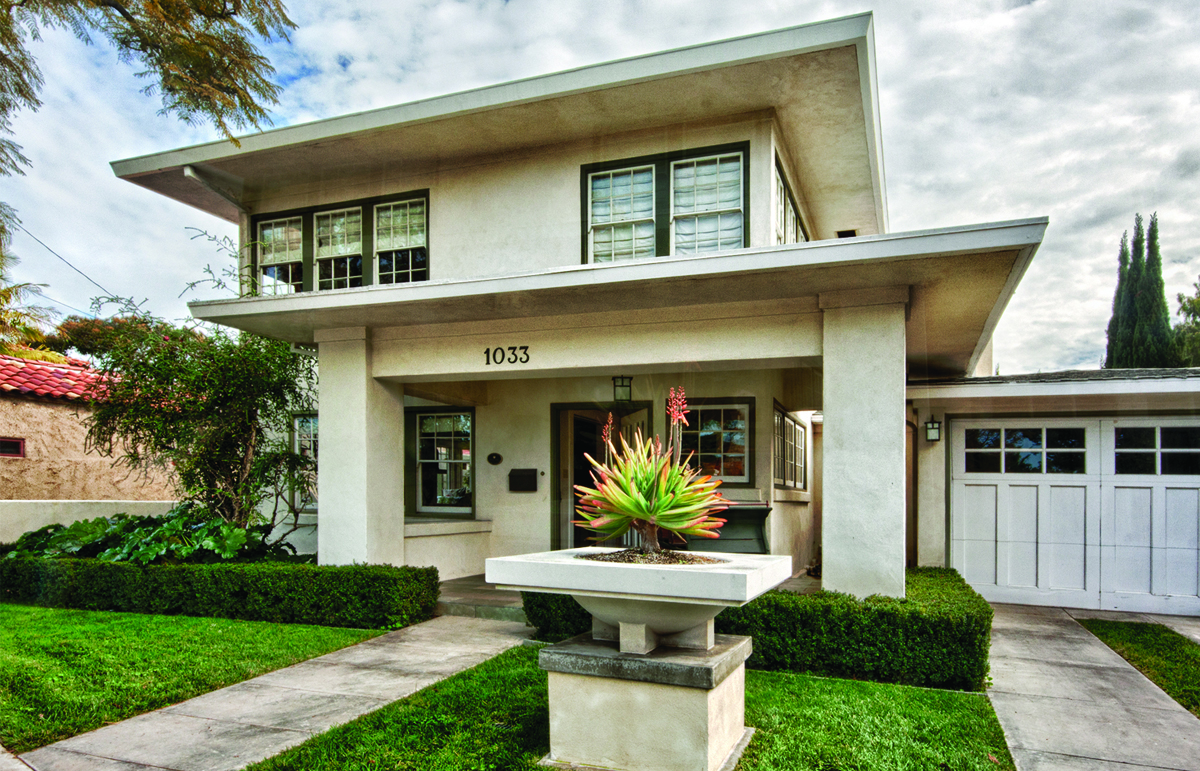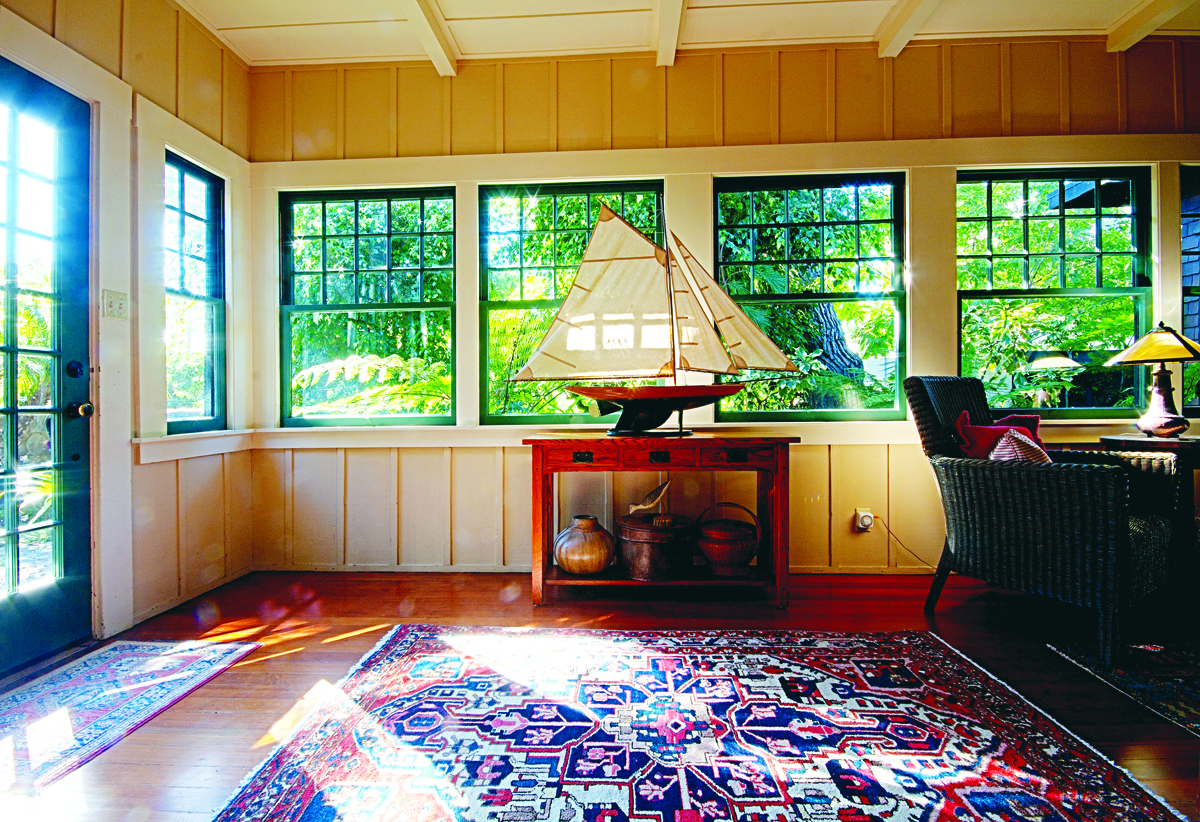2012 Coronado Historic Home Tour:
Pre-World War II Classic Architecture
Seven examples of classic architecture on one of the oldest and loveliest streets in Coronado will be featured during the 2012 Coronado Historic Home Tour, Mother’s Day, Sunday, May 13. From an early Craftsman designed by William Sterling Hebbard in 1898, to a two-story Colonial Revival mansion constructed for a Navy captain in the mid-1930s, all seven homes pre-date World War II.
This year’s featured homes are within easy walking distance of each other on Adella Avenue, a tree-lined road named for the wife of Hampton Story, one of Coronado’s founding fathers. In addition to the Craftsman and Colonial Revival examples already mentioned, they include an outstanding variety of styles such as an English Revival, a Prairie-style and one described as Spanish Eclectic.
Architectural details, such as gables, arches, niches and red-barreled tiled roofs, add to each home’s individuality and beauty. Interior renovations reflect a blend of original antique features with modern conveniences.
Most of the homes date from the 1920s and 30s. Prior owners in decades past each contributed in their own way to the rich history of Coronado. They include the developer of the El Cortez Hotel (1927), the commander of President Hoover’s flagship (1932) and a major in the Civil War.
One such owner, Capt. Henry G.S. Wallace, was a 1908 graduate of the U.S. Naval Academy, who received the Navy Cross for his actions in the Atlantic during World War I. He hired Charles Frederick Herreshoff, who was also an automobile designer and naval architect, to design his Coronado home. The Colonial Revival style he chose was very popular from 1900 to 1950, featuring shuttered casement windows, white molding accents and a traditional white fireplace mantle.
Jerauld Ingle, nephew of Elisha S. Babcock–the City’s other founding father–was a real estate developer who built numerous homes in Coronado. He built his own Prairie-style home on Adella Avenue in 1924 for $7,500. With its strong horizontal lines, the two-story house is typical of that era. Broad eaves jut out from the low-hipped roof and front porch giving it a solid look and feel, while the interior is bright and airy, with banks of multi-paned double-hung windows and bench seats in window nooks.
One home designed by renowned architect William Sterling Hebbard was built in 1898 for Major William H. Bailhache, a newspaper editor who also served in the Civil War. Many of Hebbard’s original design features remain visible in the home, including an enclosed board-and-batton sleeping porch with its original windows and a box-beam ceiling in the living room. Wainscoting in the dining room has been reconstructed to restore the room to its Craftsman roots, but a built-in Douglas fir sideboard is original.
The original owner of a 16-room English Revival mansion on the Adella Avenue tour, who commissioned its construction in 1915, was the brother of a long-time Chicago mayor; it was sold in 1923 to another illustrious family which owned it for the next 40 years. That family included the builder of the El Cortez Hotel (1927) and a prominent Navy Commander. The property was divided in 1963. This house itself was carefully restored and historically designated in 2007, and although somewhat smaller than it was nearly 100 years ago, its elegance and grandeur remain.
Rear Admiral Thomas Jones Senn took command of the 11th Naval District and Naval Operating Base at San Diego in 1930. In 1933, he had a home built in the Spanish Revival style for his family on Adella Avenue, which the Senn family occupied until the 1970s. An 1891 graduate of the United States Naval Academy, Admiral Senn served in the Spanish American War and commanded the battleship USS North Dakota, receiving the Navy Cross for his actions in the Atlantic during World War I. He later became assistant chief of Naval Operations. Senn’s son Elliott was also a Rear Admiral in the Navy, earning a Gold Star for his service on the USS Quincy in Okinawa.
Another Adella home built in 1927, utilized a Spanish Eclectic style, made popular during the 1915 Panama-California Exposition in Balboa Park. One of the owners was Capt. Lewis Coxe, who commanded the U.S.S. Salt Lake City, during the time when it served as the flagship of President Herbert Hoover from January 1932 to December 1933. The home has had few owners and remains in nearly original condition, with wrought-iron gates and railings, and many arched doorways, niches and curing walls. The fireplace surround contains original Ernest Batchelder tiles; Batchelder was a renowned tile maker from Pasadena in the early 20th century.
The annual Historic Home Tour is a major fundraiser for the Coronado Historical Association. The event will take place on Mother’s Day, Sunday, May 13, from 11 a.m. to 4 p.m., rain or shine. Tickets may be purchased in advance at the Coronado Historical Association, 1100 Orange Avenue, Coronado, by phone at 619-435-7242, or on-line at www.coronadohistory.org. For further information, call 619-435-7242.
# # #
Photos by George Green, courtesy Coronado Historical Association







